Family Adventures in Beginner White Water Rafting
Are you ready to create unforgettable memories with your family on a thrilling adventure? Whitewater rafting near me is a fantastic way to bond while experiencing the beauty of nature, whether you’re navigating the exciting rivers of Arkansas or West Virginia, or planning a unique bachelorette party in stunning Hells Canyon. The excitement of rushing waters and stunning landscapes awaits! Keep reading to discover how to prepare your family for their first whitewater adventure, the best times to go, and essential safety tips to ensure a fun and memorable outing.
Preparing Your Family for Their First Whitewater Adventure
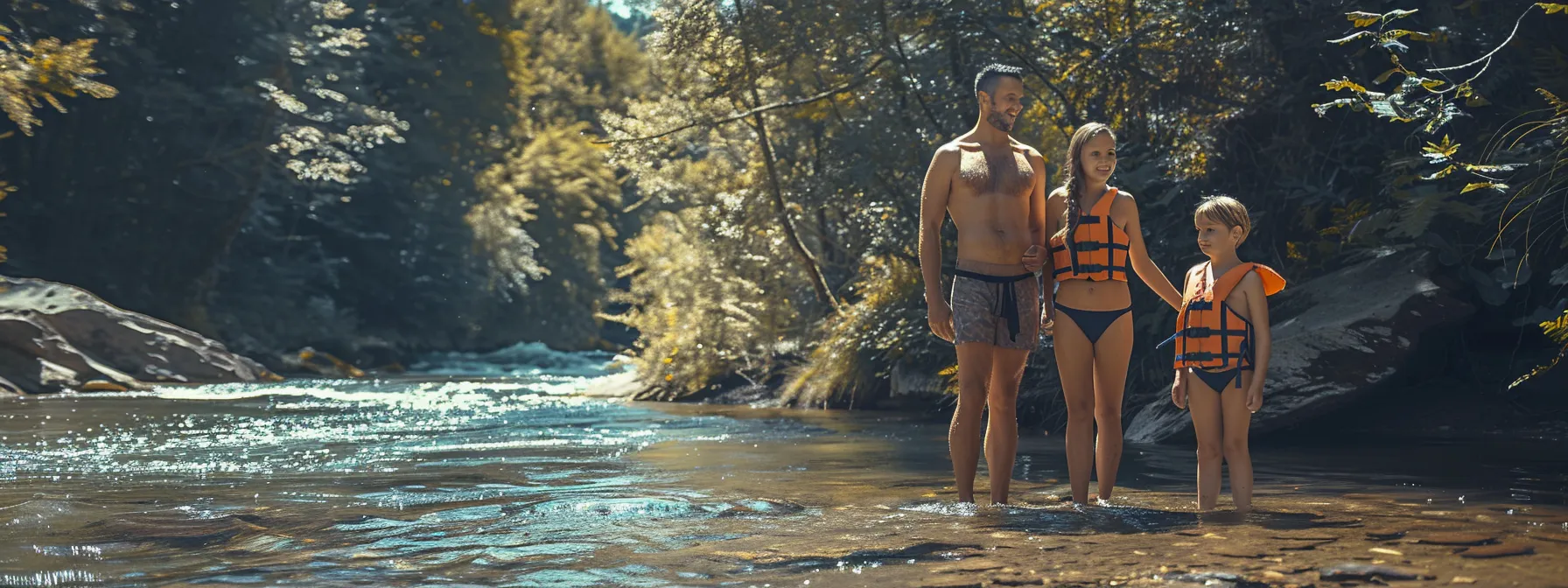
When preparing for your family’s first whitewater adventure, it’s important to consider several key factors that can significantly enhance your experience. First, selecting the right trip tailored to your family’s skill level and comfort is crucial. I recommend exploring options like the Platte River or white water rafting near me Klamath River, both offering suitable routes for beginners. Next, having the essential gear is vital for safety and enjoyment; ensure everyone has a proper swimsuit and other necessary equipment. Understanding river classifications will help you gauge the right level of challenge as well. Lastly, building confidence in children can make a world of difference—encourage them to embrace the excitement while staying safe. As we move forward, I’ll address common FAQs, delve deeper into gear selection, and share effective tips for a memorable experience.
How to Choose the Right Trip for Your Family
Choosing the right trip for your family’s whitewater adventure starts with assessing everyone’s comfort level. If you’re located in Idaho, consider the Snake River, known for its fun and manageable rapids that can keep the entire family engaged. For those seeking something a bit different, the Pigeon River offers a variety of guided trips that can cater to beginners and provide a thrilling vacation experience without overwhelming anyone.
It’s also essential to factor in the activities available beyond just rafting. Some trips might include opportunities for zip lining or hiking, allowing for a well-rounded outdoor experience. Discussing expectations as a family can help ensure that everyone enjoys the adventure and feels included in the planning process, making for unforgettable memories together.
Essential Gear for Safe Whitewater Rafting
For a safe and enjoyable experience on the whitewater of the Lehigh River, having the right gear is essential. A quality wetsuit is crucial as it provides warmth and protection against any unexpected splashes. Along with a reliable paddle, this equipment helps ensure that everyone feels secure and comfortable as they navigate the twists and turns of the river’s beauty.
I also emphasize the importance of safety gear, such as helmets and life jackets. These pieces are non-negotiable when tackling the whitewater as they offer an extra layer of security. When I gear up my family for our adventures, I want to make sure they have everything they need to enjoy the thrill while focusing on the joy of the journey ahead.
Understanding River Classifications
Understanding river classifications is vital for every family looking to embark on a rafting adventure. In Oregon, for instance, the American River offers a range of classifications that cater to different skill levels, ensuring that beginners can safely enjoy the thrills of whitewater without getting overwhelmed. As I plan our trips, I always check the classifications to ensure we choose a route that fits our comfort zone.
Classifications help assess the river’s difficulty and safety conditions, allowing families to prepare appropriately. For example, the Salmon River presents exciting challenges, but with the right outfitter and equipment, including a reliable personal flotation device, families can navigate its waters confidently. I encourage families to familiarize themselves with these classifications so they can embark on their adventure fully prepared and ready for fun.
Tips for Building Confidence in Children
Building confidence in children before their first whitewater rafting trip is essential for a successful adventure. I often take my kids on gentle trails near the rivers in Utah, where we can practice skills and get comfortable around water. Combining our outdoor excursion with a picnic afterward helps them relax and associate the adventure with fun, making them more enthusiastic about the upcoming rafting experience.
Swimming together in calmer sections of the river or at nearby lakes also boosts their confidence significantly. As we navigate through the beautiful Rocky Mountains, I encourage them to embrace the water’s flow and enjoy the simple joys of nature. This not only strengthens their resilience but also makes them excited to tackle new challenges, like whitewater rafting, with a brave and adventurous spirit.
The Best Time of Year for Family Whitewater Rafting
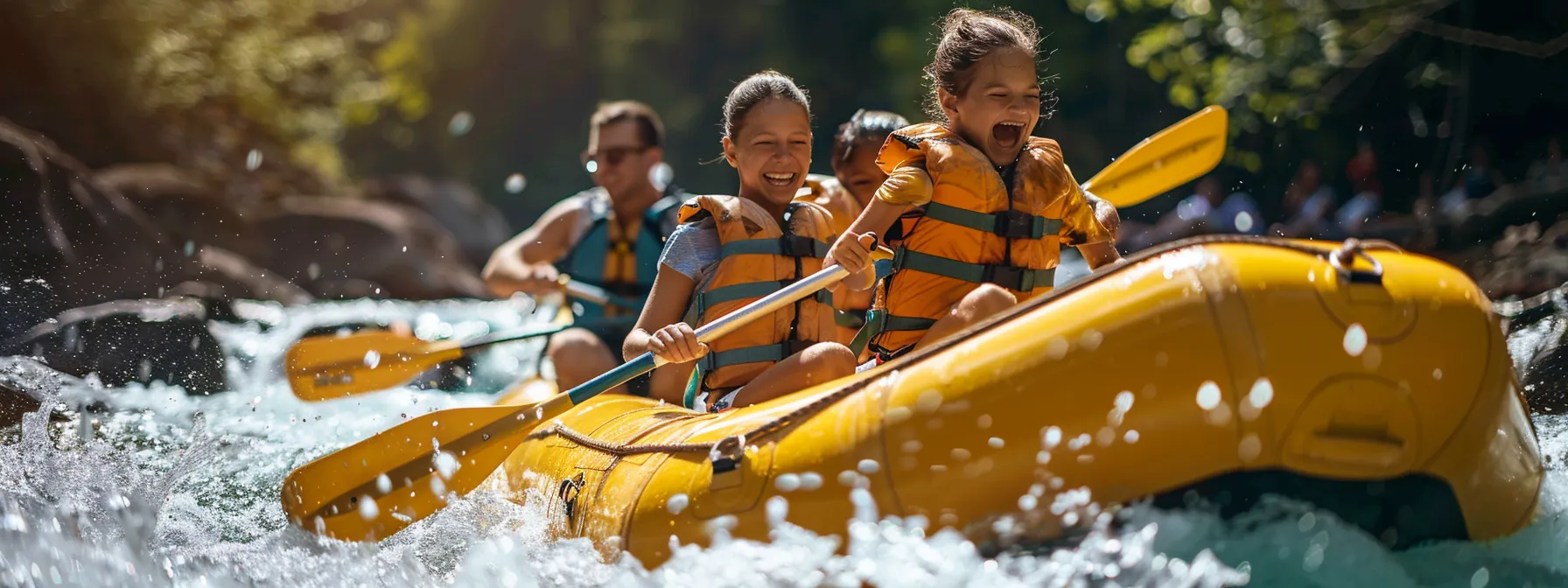
When planning a family whitewater rafting trip, knowing the best time of year can make all the difference. Seasonal conditions and water levels play a significant role in the safety and enjoyment of our adventure on rivers like the Kennebec River, Colorado River, or Gauley River. I always check anticipated weather patterns to ensure a comfortable experience for everyone involved. Rafting during the off-peak season offers its own set of advantages, such as fewer crowds and more affordable rates, making it an appealing option for families. By considering these aspects, I can set the stage for a thrilling yet safe journey down the whitewater river, ensuring we create lasting memories together.
Seasonal Conditions and Water Levels
When planning our family rafting escapades, I pay close attention to the seasonal conditions and water levels of the rivers we choose. For example, the Arkansas River tends to have ideal conditions in late spring and early summer, ensuring a fun and thrilling experience. By checking the stream conditions ahead of time, we can make informed decisions about when to hit the water, maximizing our enjoyment while prioritizing safety.
Rivers like the Nantahala River and Rogue River have their own unique flow patterns and optimal times for whitewater adventures. I find that spring runoff often brings exciting levels, but it’s essential to wear protective clothing like a rash guard to stay comfortable, especially in cooler waters. Being aware of these seasonal variations helps shape our plans for unforgettable family outings that keep everyone engaged and eager for the next adventure.
Considering Weather Patterns for Planning
As I plan our family whitewater rafting adventures, I take the time to consider weather patterns, especially those that impact river conditions. For instance, the Chattooga River and Green River can experience significant changes in water levels due to seasonal rainfall, which affects the rapids. I make it a point to stay updated on forecasts, as this knowledge ensures that we choose the safest time to navigate the thrills of rivers like Clear Creek.
Advantages of Off-Peak Season Rafting
Rafting on the South Fork American River during the off-peak season provides a refreshing experience. Fewer crowds mean we can take our time, enjoy the scenery, and fully engage with the river’s beauty without feeling rushed. This relaxed atmosphere allows my family to soak in every moment, making our adventure even more memorable.
Off-peak season often brings lower prices, which makes planning our trips easier on the budget. With the added ability to choose our favorite sections of the South Fork American River, we can focus on maximizing fun while keeping costs down. As a family, this approach allows us to enjoy various rafting experiences throughout the season while creating cherished memories together.
Safety Tips Every Family Should Know
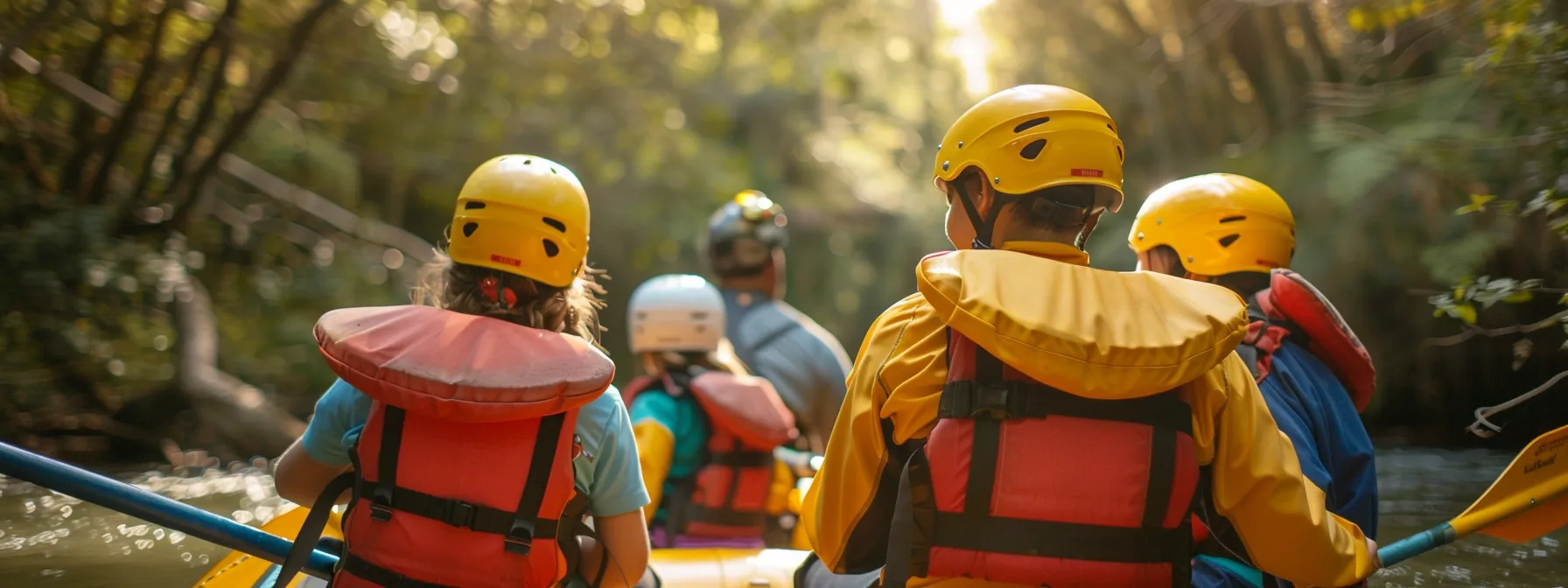
In preparing for our family whitewater rafting journey, it’s essential to understand a few key safety tips that ensure everyone has an enjoyable experience. Getting familiar with basic paddling techniques and commands helps keep the group coordinated and engaged while navigating the rapids. I find it important to know how to stay safe in the raft, including proper seating arrangements and communication signals. Additionally, unforeseen events like capsizing can happen to anyone, so knowing how to deal with them can make a significant difference. By being informed and prepared, my family and I can tackle the challenges of the river with confidence and excitement.
Basic Paddling Techniques and Commands
As I prepare my family for whitewater rafting, I focus on basic paddling techniques that can enhance our experience on the water. I emphasize the importance of synchronizing strokes, where everyone paddles in unison to maintain balance and control. This teamwork not only improves our rafting skills but also strengthens our bond as we navigate the rapids together.
In addition to synchronizing our paddling, I make sure the family understands essential commands for effective communication during our adventure. Simple commands like “forward,” “backward,” and “stop” ensure we stay coordinated, especially when faced with unexpected obstacles. By practicing these commands before hitting the water, my family feels more confident and prepared for the journey ahead.
How to Stay Safe in the Raft
Before we set out on our rafting journey, I make sure everyone understands the importance of proper seating arrangements. I ensure that each family member knows their position in the raft, which helps maintain balance and reduces the chance of capsizing. By keeping the center of gravity low and distributing weight evenly, we can navigate the river more safely and confidently.
I also prioritize clear communication while we’re on the water. Establishing visual and verbal signals helps us respond quickly to any changes or obstacles we encounter. I find that having a plan for emergencies, including how to regroup if we get separated, empowers the family to stay calm and focused, ensuring we all have a fun and safe whitewater adventure.
Dealing With Capsizes: A Quick Guide
Capsizing can be a startling experience, but staying calm is key. If we do find ourselves in the water, I instruct the family to hold onto the raft and float on our backs, keeping our feet upstream to avoid obstacles. This orientation not only helps us stay safe but also makes it easier for us to regroup.
Once we’ve regained composure, I encourage everyone to work together to climb back onto the raft. It’s important to approach this calmly, as teamwork can make the process smooth and efficient. Practicing this skill beforehand gives everyone the confidence they need to handle a capsize should it occur during our adventure.
Making the Most Out of Your Family Rafting Trip
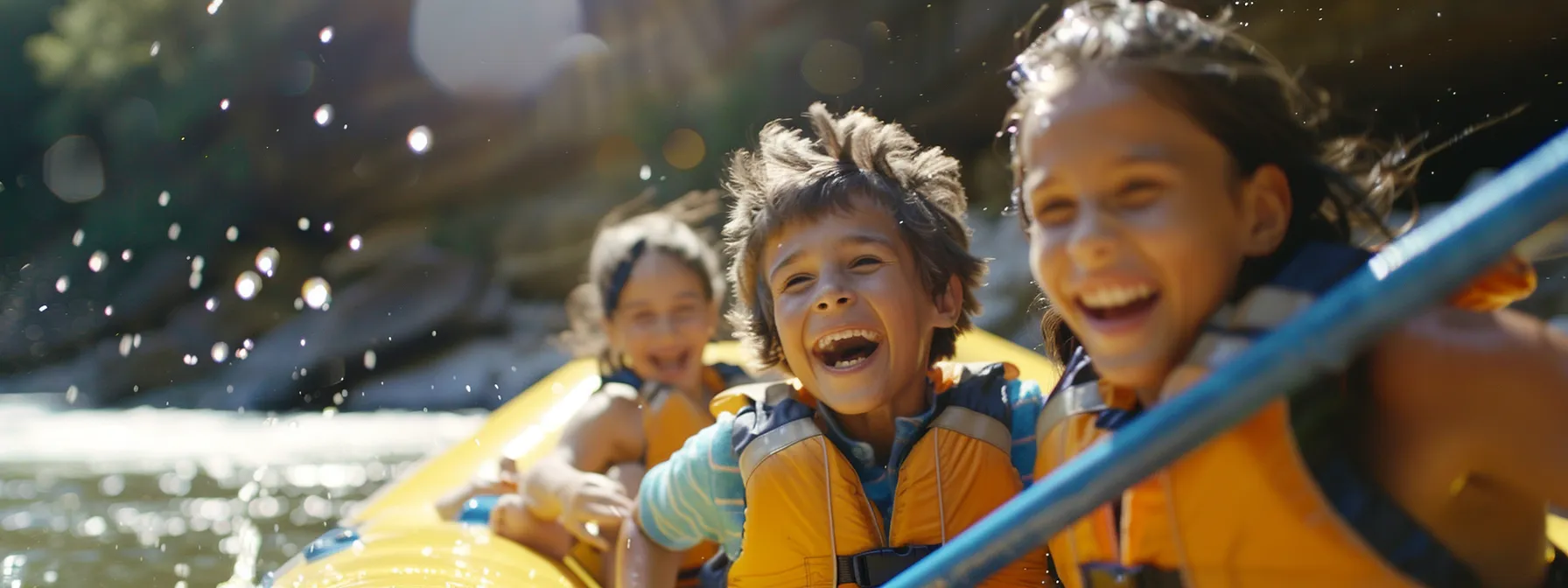
To truly enrich our family rafting experience, I think about ways to keep everyone engaged and create lasting memories. It’s essential to involve the kids in every step, making them feel like they are an important part of the adventure. We also enjoy capturing the excitement and beauty of our trip through photography; I often bring a waterproof camera along to snap candid moments as we navigate the rapids. After returning from the river, I love planning post-rafting activities that allow us to unwind and share our favorite experiences. Whether it’s enjoying a picnic by the riverbank or exploring nearby trails, these moments foster deeper connections and create cherished family memories that we can look back on for years to come.
Engaging Kids Throughout the Journey
Throughout our rafting journey, I strive to keep my kids engaged by involving them in every aspect of the trip. Whether it’s letting them help with paddling or teaching them about the river’s wildlife, I encourage their curiosity and participation, making them feel like valuable crew members. This hands-on approach not only boosts their confidence but also deepens their appreciation for the adventure we’re sharing.
After we’ve tackled the rapids, I make it a point to gather the family for a discussion about our experiences on the water. I ask my kids to share their favorite moments, and this sparks excitement and laughter as we relive those thrilling times. By encouraging them to express their thoughts, I foster a sense of belonging that helps strengthen our family bond during these memorable outings.
Capturing Memories: Photography on the River
During our rafting adventures, capturing memories through photography brings an additional layer of joy to the experience. I always make sure to bring along a waterproof camera, allowing us to snap candid moments while navigating the rapids. Whether it’s the thrill of a big wave or a peaceful moment gazing at the scenery, these photos help preserve our family’s excitement and laughter under the sun.
Reviewing the photos after our trip has become a cherished family ritual. I love hearing my kids recount their experiences as we scroll through the images, sharing their perspective on the day’s highlights. This not only fosters a sense of camaraderie but also creates lasting memories that we can look back on and enjoy together for years to come.
Post-Rafting Activities for the Family
After a thrilling day on the river, I find that engaging in post-rafting activities truly enhances our family experience. Whether we choose to relax with a picnic by the riverbank or explore nearby hiking trails, these options allow us to unwind while discussing our day’s adventures. I love watching my kids excitedly share their favorite moments, which fosters a sense of togetherness and reflection.
Additionally, I often plan for some downtime by introducing games or storytelling around the campfire if we’re camping nearby. These moments of connection not only solidify our memories but also give everyone a chance to bond in a relaxed setting. It’s the perfect way to wrap up our day and look forward to more adventures ahead.
Choosing the Right Rafting Guide for Families
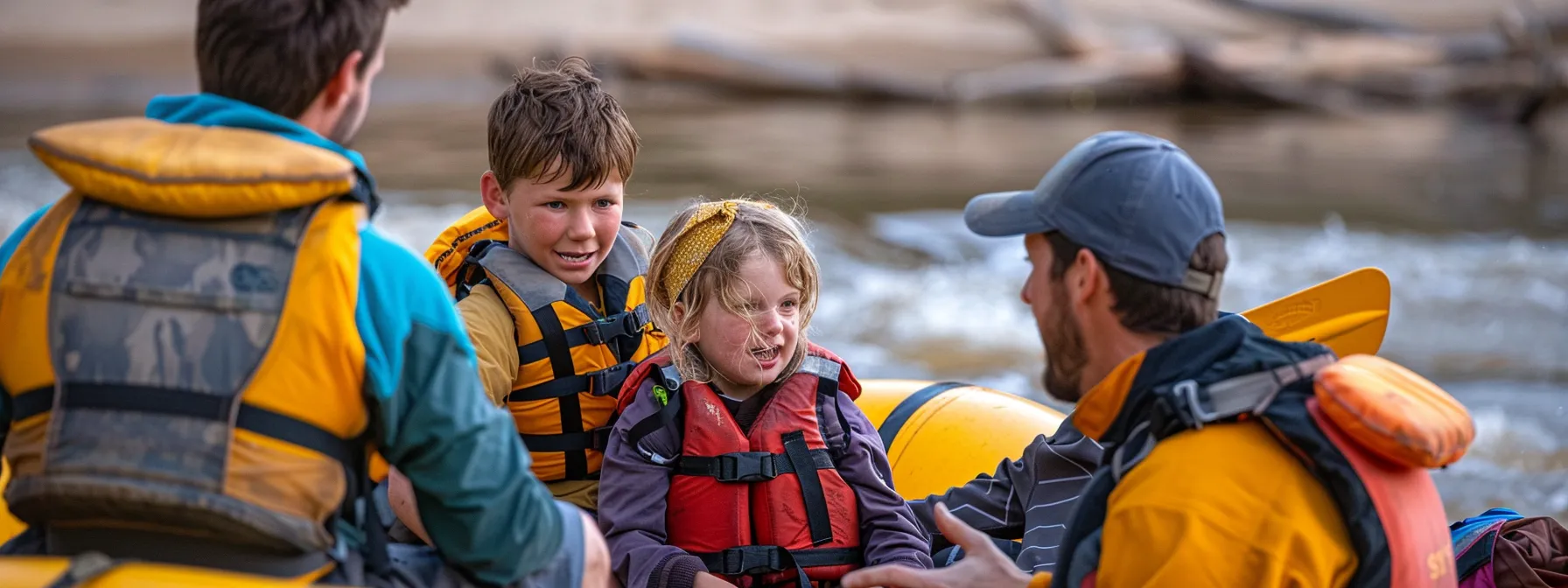
Finding the right rafting guide for our family’s adventure is a vital step that can shape the entire experience. A great guide doesn’t just know the river well; they embody qualities like patience, enthusiasm, and clear communication. These traits can create a supportive atmosphere, especially for beginners. It’s equally important to choose a family-friendly provider, as they understand the unique needs and concerns of families embarking on their first whitewater journey. I always find it useful to prepare a list of questions to ask before booking, covering aspects like safety protocols, their experience with children, and what the trip entails. This ensures my family will have a fun and safe experience, allowing us to fully enjoy the thrills of whitewater rafting together.
Qualities of a Great Rafting Guide
A great rafting guide is essential for turning our family adventure into an enjoyable experience. I look for someone who is not only knowledgeable about the river but also possesses strong communication skills, making it easy for everyone to follow their directions. Their ability to connect with kids and adults alike fosters a positive atmosphere, keeping our spirits high throughout the journey.
Safety is my top concern, so I seek a guide who demonstrates a clear understanding of the necessary safety protocols. It’s reassuring to know they will remain calm and focused in challenging situations while instilling that same confidence in us. Their enthusiasm and ability to adapt to our family’s needs truly enhance our experience, making every moment on the river memorable.
Importance of Choosing a Family-Friendly Provider
Choosing a family-friendly provider is crucial for ensuring a positive and safe experience for my family during our whitewater rafting adventure. A provider that understands the needs of families, especially those with young children, can create a welcoming atmosphere where we all feel comfortable and excited about the journey. Their experience with families allows them to cater activities to our skill levels, keeping our spirits high while minimizing any potential concerns.
A family-friendly provider not only prioritizes safety but also emphasizes fun and engagement during the trip. I appreciate guides who take the time to connect with the kids, making them feel included and important throughout the rafting experience. This personal touch can transform our outing into a memorable bonding experience, enhancing our enjoyment and encouraging a love for outdoor adventures.
Questions to Ask Before Booking Your Trip
Before I book our family’s whitewater rafting adventure, I make a point to ask about the guide’s experience and qualifications. I want to know how long they have been guiding trips, especially with kids. It’s also important to understand their familiarity with the specific river we’ll be navigating, as their knowledge can greatly influence safety and enjoyment.
Another crucial aspect involves inquiring about safety protocols and what measures they have in place for both beginners and children. I always ask about the training they provide, as well as emergency procedures. Knowing that the guide is prepared for any situation gives me the confidence that we can focus on the adventure ahead and enjoy our time on the water without unnecessary worries.
Learning and Fun: Educational Opportunities in Rafting
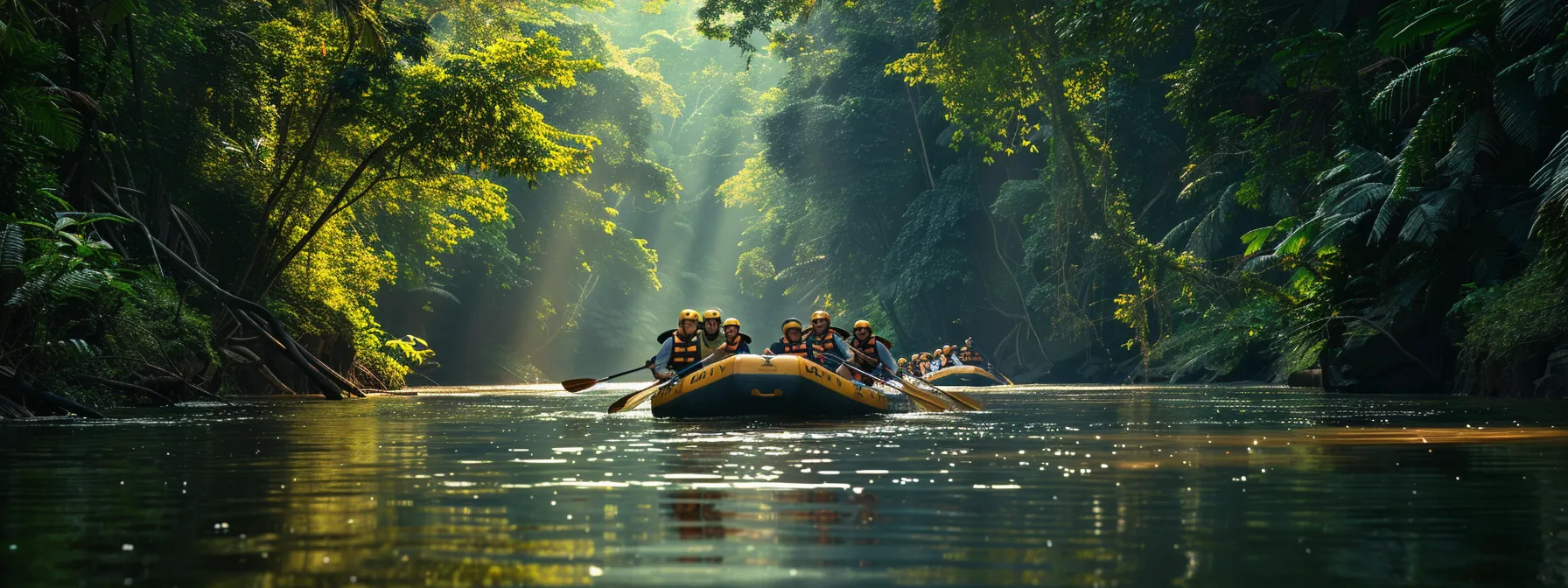
As we embark on our family whitewater rafting adventure, I see it as more than just a thrilling experience; it’s also a fantastic opportunity for education. Teaching my kids about the ecology and environment fosters a deeper appreciation for nature, allowing them to understand the ecosystems we’re navigating. Exploring the science of rivers and their flow helps bring the journey to life, as they learn how water moves and shapes the landscape around us. Along the way, I emphasize leadership and teamwork skills, encouraging my children to communicate effectively and work together to navigate the rapids. These lessons not only enrich our experience on the water but also instill valuable knowledge and skills that my kids will carry with them beyond this adventure.
Ecology and Environment: Teaching Kids About Nature
As we navigate through the rushing waters, I seize the chance to share with my kids the importance of our environment. I point out various plants and animals along the riverbank, explaining their roles in maintaining a balanced ecosystem. These moments ignite their curiosity and foster a sense of responsibility towards nature, helping them understand the interconnectedness of all living things.
I also encourage my children to observe how water shapes the land, from the smooth stones in the riverbed to the lush vegetation nearby. Discussing the journey of a river from its source to the ocean helps them grasp the water cycle and its significance. By integrating these lessons into our adventure, I aim to instill a deeper respect for the environment that we enjoy together.
The Science of Rivers and Flow
As we navigate the rivers, I take the opportunity to discuss how flowing water shapes our environment. I explain how sedimentary rocks and varying terrain affect the speed and direction of the current. Observing the changes in the river’s width and depth helps my children understand how these factors create different types of rapids and pathways through which we paddle.
During our adventure, I share insights about the water cycle, emphasizing where rivers originate and how they contribute to larger bodies of water like lakes and oceans. By connecting our adventure on the river with the broader ecological system, I hope to spark my children’s interest in learning more about geology and hydrology. This understanding not only enriches our experience but also fosters a sense of stewardship for the natural world around us.
Leadership and Teamwork Skills on the Water
As we navigate the rapids, I emphasize the importance of teamwork among us. Each family member plays a unique role, whether paddling, looking out for obstacles, or communicating commands. This dynamic not only builds trust but also encourages everyone to work together, reinforcing the idea that success often depends on collaboration.
I love watching my kids take charge as they learn to lead the group during our rafting adventures. They start to recognize the value of clear communication and decision-making, ensuring everyone feels included and valued. These experiences create a lasting foundation for leadership skills that they can apply in various aspects of their lives beyond the river.
Conclusion
Family adventures in beginner white water rafting foster bonding and create lasting memories. Engaging children in the planning and activities encourages teamwork and builds confidence. The thrill of navigating the rapids together enhances their appreciation for nature and the environment. Overall, these experiences instill valuable life skills and a love for outdoor adventures that families can cherish for years to come.

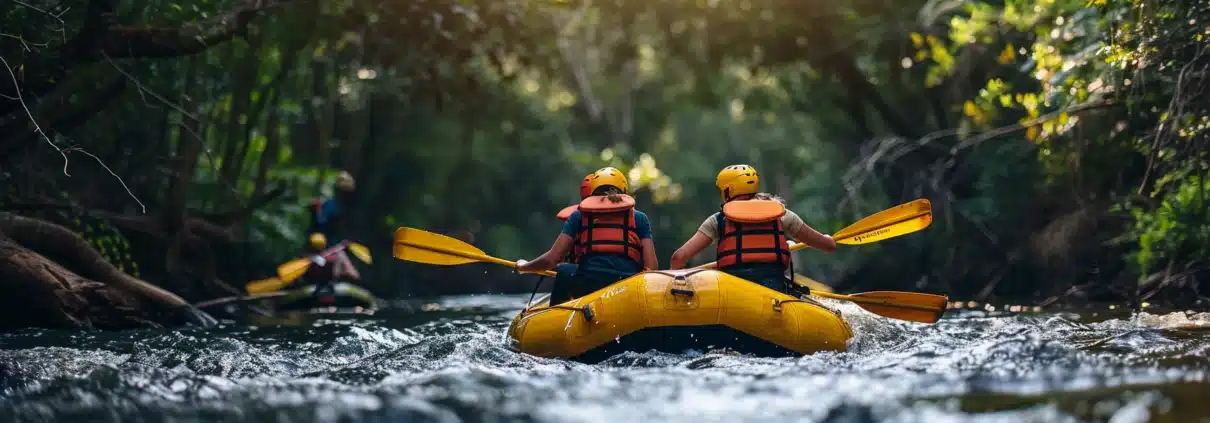


Leave a Reply
Want to join the discussion?Feel free to contribute!